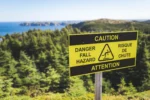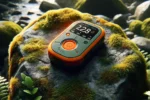23 tips to prepare for a high altitude hike
This post may contain affiliate links. This means that we may receive a small commission from purchases through those links. Read more in our affiliate disclosure.
Do you know that smell of a high mountain? It’s special. And this article will teach you everything you need to know to experience it!
Climbing high mountains poses a unique set of challenges: Thin air, low oxygen, unpredictable weather, and tough terrain. Successful high altitude hiking requires thorough preparation, appropriate gear, and specialized physical training. Proper nutrition and hydration strategies play a crucial role, as do measures to prevent and address altitude sickness by acclimatizing slowly to the reduced oxygen levels.
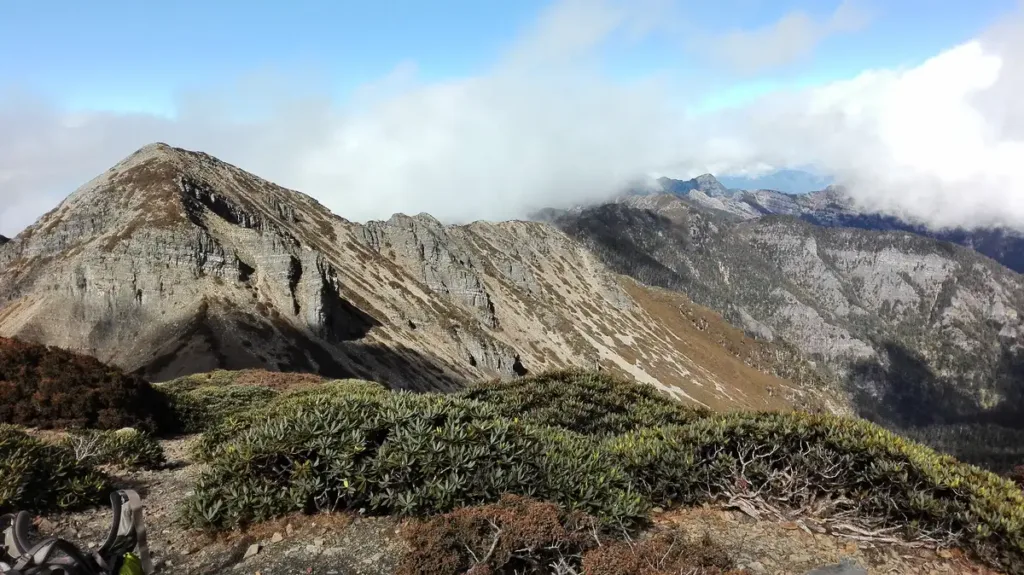
- Introduction
- The Various Altitude Categories
- How to Prepare for High Altitude Hiking
- Select the Right Mountain and Trail
- Choose the Best Time for Your Hike
- Essential Gear for High Altitude Hiking
- Find a Hiking Buddy: Solo vs Group Hiking
- Navigational Tools and Techniques
- Trail Etiquette and Environmental Responsibility
- Communicate Your Plan
- Training for High Altitude Hiking
- Start Early to plan Your Training Regimen
- Cardiovascular Training: Build Endurance
- Strength Training: Enhance Muscle Power
- Train with Weight to Simulate Hiking Conditions
- Acclimatize to Higher Elevations
- Give time for Muscle Recovery
- Nutrition and Hydration Strategies
- Hydration at High Altitudes
- Nutritional Needs: Carbohydrates, Iron, and Antioxidants
- Meal Planning for Sustained Energy
- Altitude Sickness and Medical Precautions
- Tips for acclimatizing
- Prepare a First Aid Kit for High Altitude Hiking
- Portable Oxygen for Altitude Sickness Prevention
- Consult with a Doctor Before Your Hike
- physiological changes causing Altitude Sickness
- Final Preparations and Mindset
The Various Altitude Categories
High altitude is typically defined as heights ranging from 2,500 to 3,500 meters (8,200 to 11,500 feet), very high altitude from 3,500 to 5,500 meters (11,500 to 18,000 feet), and extreme altitude above 5,500 meters (18,000 feet). But why categorize them? Well, as you climb higher, the air pressure decreases, meaning there’s less oxygen available. This can have significant effects on the body, particularly for those not acclimatized.
How to Prepare for High Altitude Hiking
Select the Right Mountain and Trail
The first step in your high altitude hiking adventure is to choose your mountain and trail. It’s not just about picking the highest or most famous peak. Consider your experience level, fitness, and the time you have available. Research different trails and mountains, looking at factors like the trail length, elevation gain, difficulty level, and expected weather conditions. Websites like AllTrails, hiking forums, and guidebooks are excellent resources.
Choose the Best Time for Your Hike
Timing is crucial in high altitude hiking. The best time to hike usually depends on the specific mountain and trail you’re considering. Generally, summer months offer the most stable weather conditions, but they can also be the busiest. Consider shoulder seasons like late spring or early fall when the trails are less crowded, and the weather can still be favorable. However, be aware of the risks of sudden weather changes and plan accordingly.
Essential Gear for High Altitude Hiking
The right gear is your best ally in the mountains. Essential items include:
- Hiking Boots: A good pair of hiking boots is crucial. They should be comfortable, waterproof, and offer good ankle support.
- Moisture-Wicking Clothing: Choose clothing that wicks away moisture to keep you dry and comfortable. Avoid cotton as it retains moisture. Layering is key, so include base layers, insulating layers, and an outer layer.
- Warm Jacket: Temperatures can drop significantly at high altitudes. A quality warm jacket, preferably insulated and lightweight, is essential for keeping you warm during rest periods or in case of a sudden temperature drop.
- Raincoat: Weather can be unpredictable, and getting wet can be dangerous in cold conditions. A waterproof and breathable raincoat is essential to protect you from rain and wind.
- Hat and Gloves: A significant amount of body heat is lost through the head and hands. A warm hat and a pair of gloves are crucial, especially in the early morning or evening and at higher altitudes.
- Sunglasses: At high altitudes, the UV rays are stronger, and the snow can cause severe glare. Good quality UV-protective sunglasses are a must to protect your eyes.
- Backpack: Your backpack should be large enough to carry all your essentials but as light as possible. Look for one with a good support system to distribute weight evenly.
- Sleeping Bag: If you plan to camp, you need a good sleeping bag rated for low temperatures. The temperatures can drop significantly at night, even during summer months in high-altitude areas.
- Tent: For multi-day hikes, a lightweight and sturdy tent designed for high-altitude or four-season conditions is necessary to withstand potentially harsh weather.
- First-Aid Kit: Always carry a well-stocked first-aid kit including items for blisters, cuts, and basic medication. Include altitude sickness medication as a precaution.
- Sunscreen and Lip Balm: The stronger UV rays at higher altitudes make a high SPF sunscreen essential. Also, don’t forget a lip balm with sun protection. (I remember my first hike above 3000 m… I got incredibly sunburned lips. Don’t make the same mistake. It’s painful.)
- Water Bottles or Hydration System: Carry enough water or have a means to purify natural water sources. Your water needs increase at high altitudes.
- Food and Snacks: Bring enough high-energy food and snacks to last the duration of your hike. Include easy-to-eat items like nuts that don’t require cooking.
- Headlamp/Flashlight: Days can be shorter at high altitudes, or you might get delayed. A headlamp or flashlight is essential for any after-dark activities.
- Map and Compass/GPS Device: Even if you’re on a well-marked trail, it’s better to have a map and compass or a GPS device, especially in unpredictable weather or if you stray off the path.
Altitude Quiz

Find a Hiking Buddy: Solo vs Group Hiking
Hiking at high altitudes can be risky, so consider whether you want to go solo or with a group. Solo hiking offers freedom and a unique kind of solitude, but it also means you have to rely entirely on yourself in case of emergencies. Hiking with a group or buddy provides safety in numbers, shared resources, and the camaraderie of shared experience. Whether you choose to hike alone or with others, always let someone know your plan and expected return time.
Navigational Tools and Techniques
In the high altitude wilderness, a GPS device, a map, and a compass are your best friends. Learn how to use them effectively. Even in the age of digital navigation, don’t underestimate the importance of traditional map and compass skills – batteries can die, and devices can fail.
Phone batteries tend to die quickly in the cold, so your map app might not be as reliable as you think. (Warm the phone up against your body if this happens.)
Trail Etiquette and Environmental Responsibility
Respect the environment and fellow hikers. Stick to the trail to minimize your impact on the surrounding nature, pack out all your trash, and be considerate of wildlife. Keep noise to a minimum and yield to other hikers as needed.
On high mountains, be especially careful to not let any loose rocks roll down the slope. They can pick up more speed than you think and hit someone further down on a meandering path.
Communicate Your Plan
Finally, always leave a detailed plan with someone you trust. Include your route, expected return time, and any other relevant information. This step is crucial for your safety, especially in remote or challenging environments.
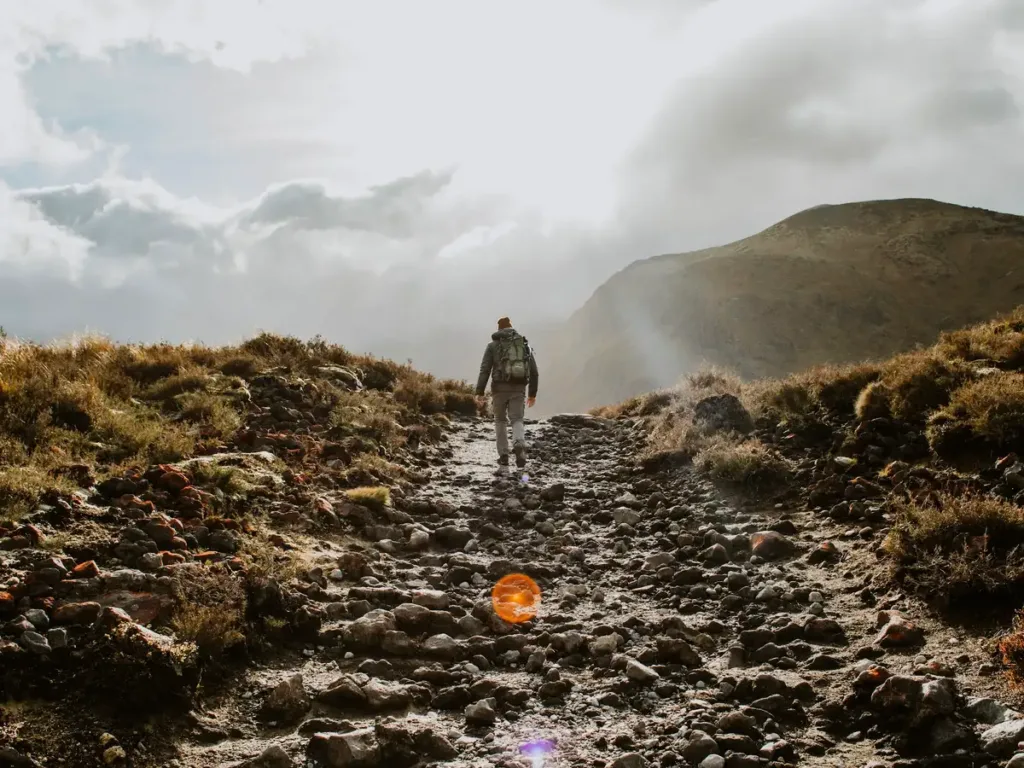
Training for High Altitude Hiking
Start Early to plan Your Training Regimen
It takes a while to prepare your body to handle the unique demands of high altitude. As a beginner, start your training at least a few months in advance. Create a training plan that gradually increases in intensity. This approach helps in building endurance and strength over time, reducing the risk of injury.
Cardiovascular Training: Build Endurance
Cardiovascular fitness is key for high altitude hiking. Activities like running, cycling, swimming, and even brisk walking can greatly enhance your cardiovascular health. Aim for at least 30 minutes of cardio, 3-4 times a week. Over time, increase the duration and intensity. This consistent cardiovascular training improves your body’s ability to use oxygen efficiently, a critical factor in high altitude environments where oxygen levels are lower.
VO2 max, the maximum amount of oxygen your body can use during intense exercise, is a key factor in high altitude hiking. While it’s partly genetic, you can improve it with consistent cardio training. Interval training, where you alternate between high and low-intensity exercise, is particularly effective for improving VO2 max.
Strength Training: Enhance Muscle Power
Strength training is equally important. Focus on exercises that strengthen your legs, core, and back – these muscles are heavily used in hiking. Squats, lunges, planks, and deadlifts are great exercises. Include some upper body workouts too, as you’ll need to carry a backpack. Aim for two strength training sessions per week. Remember, building muscle also helps in fat burning, which is beneficial for long hikes.
Train with Weight to Simulate Hiking Conditions
To simulate hiking conditions, train with a weighted backpack. Start with a lighter weight and gradually increase it to the weight you’ll be carrying on your hike. This type of training helps your body adapt to the additional load and improves your balance and stability, which are crucial on uneven mountain terrains.
As an added bonus, wear a mask while training. You know, the thick kind that makes breathing more difficult. This will train your lungs to work harder.
Acclimatize to Higher Elevations
Acclimatization is a process where your body adjusts to lower oxygen levels at higher altitudes. If possible, train on hills or mountains to mimic the conditions you’ll face. Even if you can’t train at high altitudes, include some hikes with elevation gains. This not only helps in acclimatization but also gives you a taste of what to expect.
Give time for Muscle Recovery
Don’t underestimate the importance of rest and recovery. Your muscles need time to repair and strengthen. Include rest days in your training plan and consider activities like yoga or stretching, which can aid in muscle recovery and flexibility.
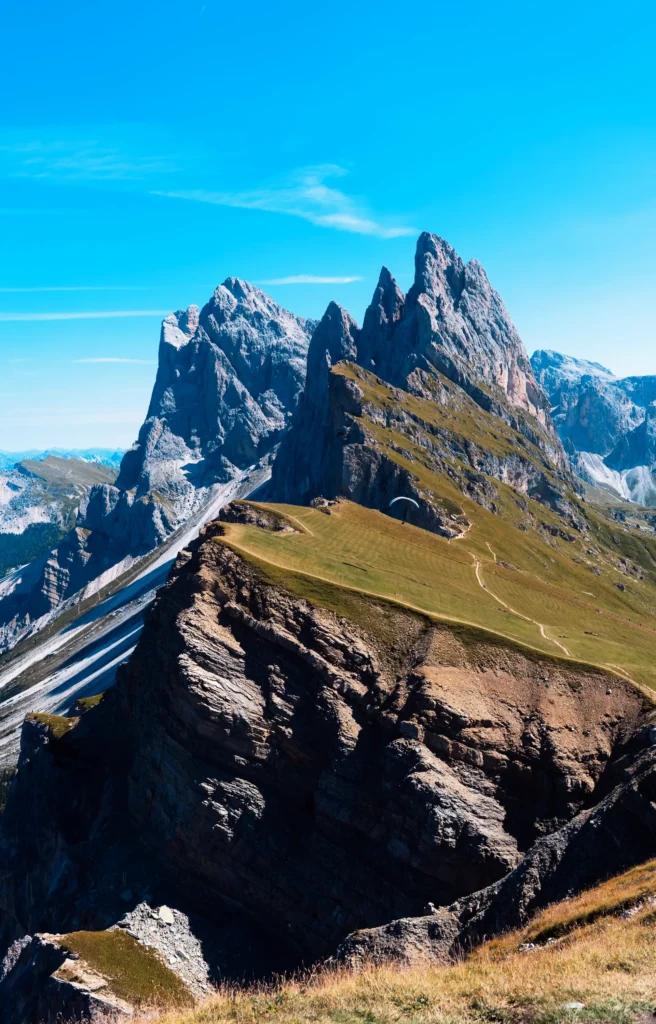
Nutrition and Hydration Strategies
Hydration at High Altitudes
At higher elevations, the air is drier and you breathe more rapidly, leading to increased fluid loss. This can be compounded by the diuretic effect of altitude, further increasing the risk of dehydration. It’s recommended to drink at least 3-4 liters of water per day while hiking at high altitudes. Carry enough water and have a means to purify natural water sources. Thirst isn’t always a reliable indicator of hydration status, so drink regularly.
Nutritional Needs: Carbohydrates, Iron, and Antioxidants
The right nutrition can significantly impact your high altitude hiking performance and experience. Carbohydrates are the primary fuel for your muscles and brain. Aim for a diet rich in complex carbohydrates such as whole grains, fruits, and vegetables. They provide sustained energy, which is crucial for long hiking days.
Iron is vital for transporting oxygen in your blood, and its importance is amplified at high altitudes. Include iron-rich foods like lean meats, beans, and leafy greens in your diet, already leading up to the hike. Additionally, antioxidants are crucial as they help combat oxidative stress caused by increased metabolic activity at high altitudes. Berries, nuts, and green vegetables are excellent sources of antioxidants. And so is chocolate! 😉
Meal Planning for Sustained Energy
When planning meals for your hike, focus on foods that are high in energy, easy to carry, and simple to prepare. Include a mix of carbohydrates, proteins, and fats. Energy bars, nuts, dried fruits, whole grain sandwiches, and jerky are good options. For longer hikes, consider dehydrated meals which are lightweight and only require hot water to prepare.
Your body burns more calories at high altitudes, so you’ll need to eat more than usual. Plan your meals and snacks to ensure you have enough energy throughout the day. Eating small, frequent meals and snacks is often more manageable and effective than relying on larger meals.
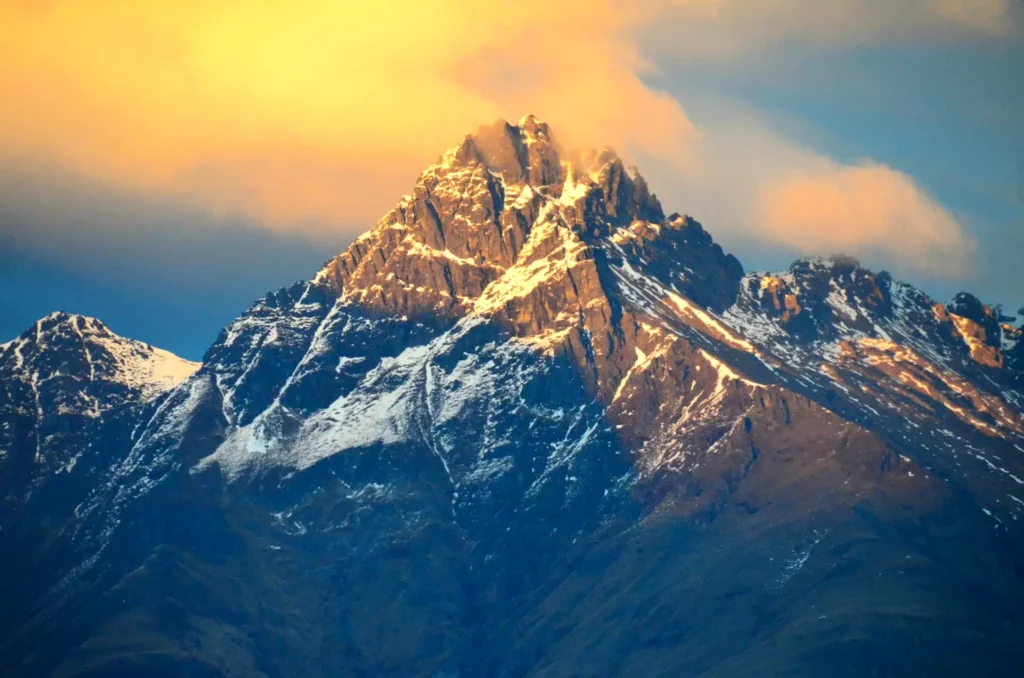
Altitude Sickness and Medical Precautions
Altitude sickness, or Acute Mountain Sickness (AMS), is a common concern when hiking at high elevations. It can affect anyone, regardless of fitness or experience. The key symptoms include headache, nausea, dizziness, fatigue, and shortness of breath. The best way to prevent AMS is by acclimatizing properly – ascend slowly, allowing your body time to adjust to the altitude.
Tips for acclimatizing
Proper acclimatization is the best way to prevent altitude sickness. Here are some general guidelines:
- Ascend Slowly: The rule of thumb is not to increase your sleeping elevation by more than 300 to 500 meters (1,000 to 1,600 feet) per day once above 3,000 meters (10,000 feet).
- Rest Days: Above 2,500 meters (8,200 feet), for every 900 to 1,200 meters (3,000 to 4,000 feet) of ascent, take a rest day to allow your body to adjust.
- Climb High, Sleep Low: Engage in light activity at higher altitudes during the day, then return to a lower altitude to sleep.
- Stay Hydrated: Dehydration can worsen the symptoms of altitude sickness. Drink plenty of water, but avoid alcohol and caffeine.
- Eat a Balanced Diet: A diet high in carbohydrates can help your body acclimatize.
If symptoms of altitude sickness appear, it’s important to not ascend any higher until they have resolved. If symptoms worsen or do not improve with rest, the best course of action is to descend.
Prepare a First Aid Kit for High Altitude Hiking
A well-stocked first aid kit is a must-have on any high altitude hike. Your kit should include items for treating minor injuries, such as bandages, antiseptic wipes, blister plasters, and pain relievers. Include medication for altitude sickness, such as Acetazolamide (Diamox), if recommended by your doctor. Also, carry any personal medications and a small booklet on first aid procedures.
Portable Oxygen for Altitude Sickness Prevention
For extremely high altitudes, some hikers carry portable oxygen. It can be helpful for those who struggle with acclimatization or in emergency situations. However, it should not be relied upon as a substitute for proper acclimatization. Consult with a professional before deciding to carry oxygen, as it adds significant weight and requires proper usage knowledge.
Consult with a Doctor Before Your Hike
It’s wise to consult with a healthcare professional before embarking on a high altitude hike, especially if you have pre-existing health conditions or are new to high altitude hiking. A doctor can provide advice on altitude sickness prevention and treatment, and may recommend a pre-hike checkup to ensure you’re fit for the adventure.
physiological changes causing Altitude Sickness
At sea level, the atmospheric pressure ensures a sufficient density of oxygen molecules for our bodies to function optimally. As altitude increases, atmospheric pressure decreases, and consequently, the density of oxygen molecules in the air reduces. This means that with each breath, less oxygen is available for your body to use: at 3000 m (10000 feet), with every breath, you get 2/3 of the oxygen you’d get at sea level, and at 5500 m (18000 feet), you’re down to 1/2.
Body’s Response to Low Oxygen
In response to lower oxygen levels, your body makes immediate and longer-term adjustments. Initially, you breathe faster and deeper to maximize oxygen intake. Your heart also beats faster to circulate the available oxygen more efficiently.
Over time, the body increases the production of red blood cells, which carry oxygen, to improve oxygen delivery to your tissues. However, this adaptation takes time, and if you ascend faster than your body can adjust, you may experience altitude sickness.
Fluid Balance and AMS
The lack of oxygen at high altitudes can cause a fluid imbalance in the body, leading to a condition known as hypoxia. This can result in fluid leakage from the capillaries, which may cause swelling of the brain (cerebral edema) or fluid in the lungs (pulmonary edema), both of which are severe forms of altitude sickness. (This is why the symptoms of altitude sickness are so similar to the ones of a concussion!)
Medications for Altitude Sickness
Medications like Acetazolamide (Diamox) are often used to help prevent and treat altitude sickness. Acetazolamide works by acidifying the blood, which stimulates the respiratory center to increase the depth and rate of breathing. This accelerated breathing helps to increase oxygen intake and speed up the acclimatization process. It also helps to balance the fluid levels in the body, reducing the risk of cerebral and pulmonary edema.
Dexamethasone, is a steroid that reduces inflammation and swelling. It’s used to treat severe altitude sickness, specifically to reduce the swelling in the brain when symptoms of High Altitude Cerebral Edema (HACE) are present.
Another medication that is sometimes prescribed to prevent altitude sickness is…Viagra. Yep, that one! Its primary function, dilating blood vessels, can be beneficial at high altitudes where blood vessels in the lungs tend to constrict due to lower oxygen levels. By improving blood flow and reducing lung pressure, Viagra helps alleviate the symptoms of HAPE, making breathing easier.
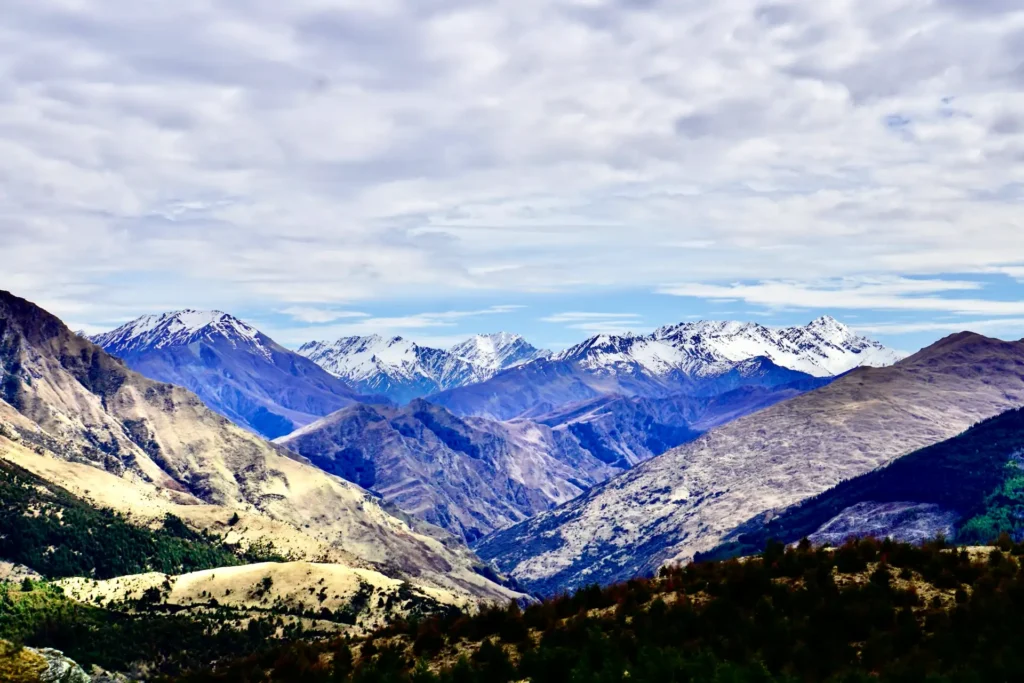
Final Preparations and Mindset
Final Gear Check and Optional Items
Before you set off on your high altitude adventure, conduct a thorough gear check. Ensure you have all the essentials we discussed earlier, and everything is in good working order. Consider also some optional items that might enhance your experience: trekking poles for added stability, gaiters for snow or mud, a camera for capturing the views, and a book or journal for downtime. Also, pack some comfort items like your favorite snack or a small keepsake – it’s remarkable how a small touch of familiarity can boost your morale on the trail.
Mental Preparation
High altitude hiking can be as much a mental challenge as a physical one. Familiarize yourself with the route and potential challenges you might face. Visualize yourself successfully navigating these challenges. Prepare to be flexible and patient; things may not always go as planned.
It’s also important to know and respect your limits. There’s no shame in turning back if conditions are unsafe or if you’re not feeling well. The mountains will always be there for another attempt. The goal is not just to reach the summit but to return home safely.
Take It Slow
High altitude hiking is not a race. Taking it slow helps both acclimatization and to conserve energy. Enjoy the journey – take in the views, appreciate the solitude, and savor the experience. These moments, the challenge, and the beauty of nature are what make high altitude hiking an unforgettable adventure.
Hard altitude quiz

